PSSA Orme Weekend (July 2023)
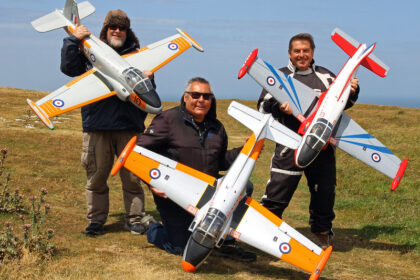
It has been some time since I did a PSSA write up due, largely, in part to laziness, but also the fact that Phil Cooke does a very comprehensive write up for the PSSA site. So how can I better it, particularly when my knowledge of the anorak subject of scale models is somewhat lacking to say the least? Suffice it to say that I no longer think that every item is a Spitfire, but I am still a bit reticent about asking any noddy questions for fear of robust scything banter.
The weekend of 1st & 2nd July bode well weather wise. Some strong westerlies forecast, which makes a change from the first 3 PSS events this year when we have been plagued with high pressure, low wind (from the sky) and easterlies. So we were expecting a high turn out of between 30 and 50 modellers at the “Tank Tracks” car park which faces WSW to SW. I flew my Hurricane on the Friday when the lift was a bit mixed due to some mist and rain. Sun, however was expected both Saturday and Sunday, so sun cream was recommended (but not used in my case, hence “lobster face”). I should have listened to Baz Luhrmann (if you were born in 1999, and most of you were, you will understand that reference?)
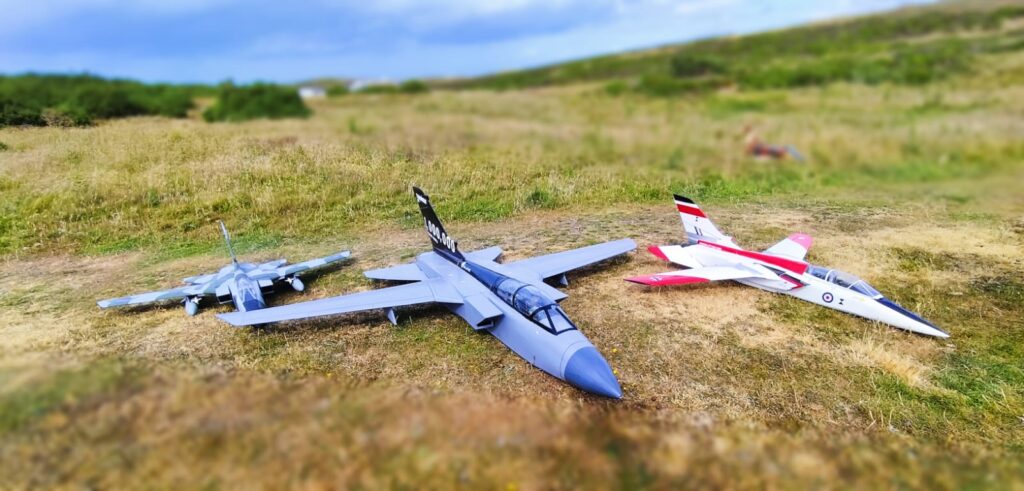
To cope with a high turn out (we have had over 50 modellers attend in the past) Phil in his most efficient manner had organised marshals to police the safety aspects. In reality, we are closely watched by the warden, and have to make sure we fly safely. Dave Gilder (thank you Dave) had printed “PSSA Crew” onto the back of a luminous vest as various volunteers shared the role over the weekend. Some turned out to be more power crazed than others. Tact forbids me to name names. The rule, as usual, was a maximum of 6 models in the air at once, and a pilot box so one could announce landing and take off to each other. We do get, particularly at the height of the season, walkers who have no idea where the landing area is, and sometimes stand to watch in an inappropriate spot.
I heard a few stories of modellers staying up all night to finish a model eg. the Focke Wulf of John Hey, and the Hawk of Dave Gilder.
Day 1
When we arrived on the Saturday, the sky was looking grey, and there was some misty rain in attendance. The temperature was low but the lift was booming and on the slope. About 11.30am, the wind shifted westwards slightly once the rain disappeared and the sun came out. Although still flyable, the wind was on the point and was splitting either side of the Orme. This meant that one struggled to fly left to right but then met with a hugely fast right to left pass.
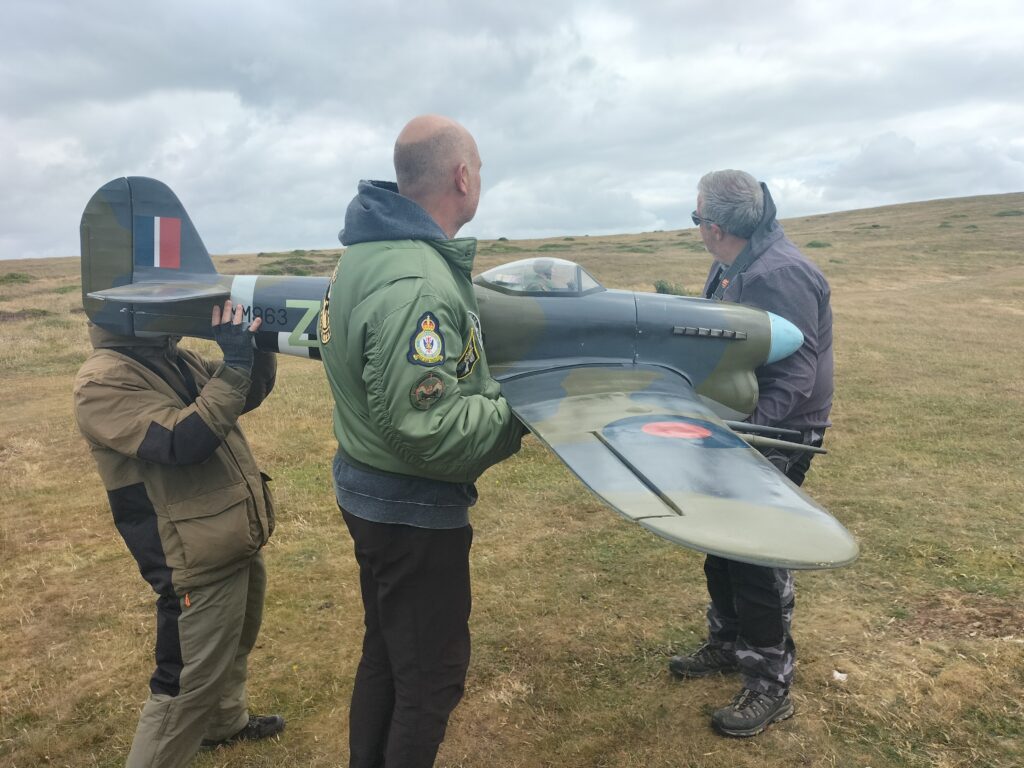
Mid Air Collision
I tried the new conditions with my large Jet Provost, as did Tim Mackie and Steve Kemp. Dave Gilder also joined the party with his Fouga Magister. I had flown for some time by this point. Phil Cooke landed his Hurricane, and I followed. As I was completing my left hand circuit, there was an almighty crash as Dave and Tim had a high speed mid-air collision. As I turned to concentrate on my landing, I witnessed a one winged Fouga Magister spinning into the rocks to our left. Fortunately I landed safely, and joined the search party for bits. Tim’s model was a write off, and he is still missing one wing, which has now doubt fluttered down somewhere. Everyone was suitably sympathetic but Tim was most sanguine about his loss saying “If you can’t cope with a crash, you shouldn’t fly. It happens.”
Maidens (ooh la la)
New to the slopes this weekend was Chris Barlow’s big JP, resplendent in one of the RAF training liveries of luminous orange over silver, and finished superbly, as we come to expect from Chris. I asked him how it flew, and the answer was straight and level out of the box with little correction needed from the sticks then a perfect axial roll, exactly my experience on my first flight in a 60 mph wind some years ago. More large JP’s are about to exit the womb from Phil Cooke, and Dave Gilder (a nice metaphor for the ladies there).
Phil Stone was there as usual with his superb collection of correx constructed scale gliders, in one of the photos once can see the big and small Vought Corsairs. They suffer, if anything from a lack of weight and the latest version had some ballast in it. We also thank him for his action photos in the video.
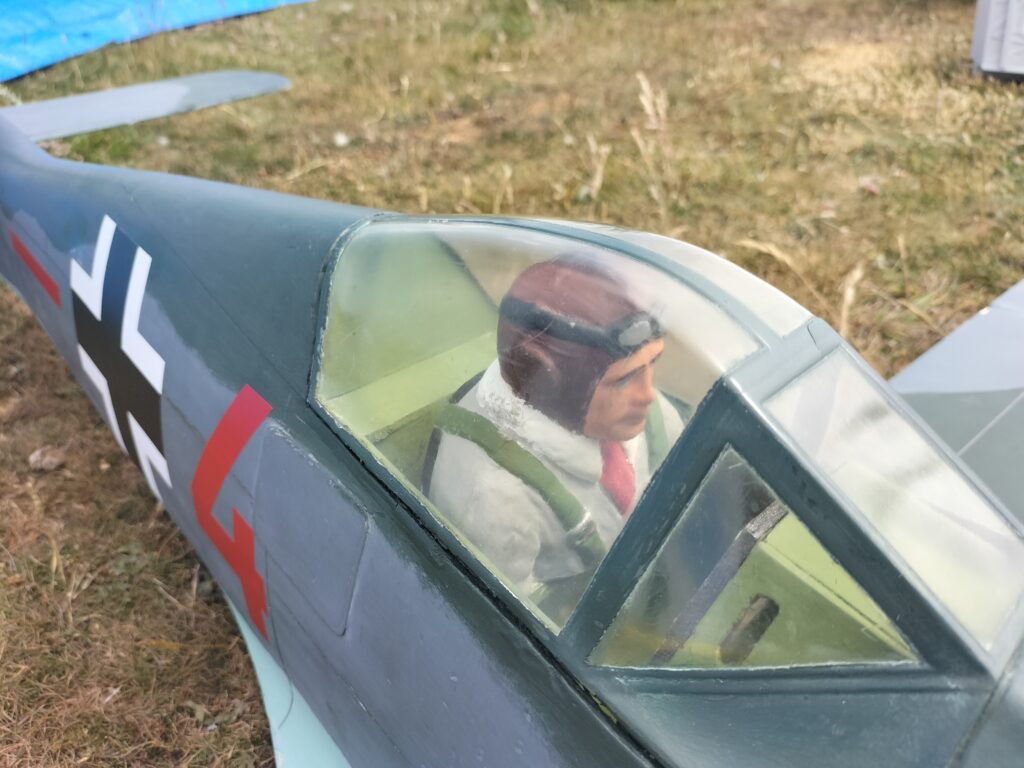
Andy Meade brought his usual array of large models, including, for the first time for some time, his huge A10 liveried in arctic colours with some very fine weathering now in abundance. We also saw his Phantom, large Typhoon and Gloucester Meteor amongst others. We must also not forget the high speed duet display of Simon Cocker and partner’s B52s
We all suffered from sunburn which stemmed from sitting out in a strong wind and no sun block, the weather having been cloudy at the beginning of play then sunny later on. Anyway less of the weather forecast, the highlight as always is a convivial meal with good friends at the Queens Head in Llandudno on the Saturday
Day 2 Events
Day 2 (Sunday) again dawned with overcast skies and a threat of rain. This time sun cream was applied. The conditions were a lot better with slightly more South in the wind direction. Conditions were nearly perfect. The wind however got stronger and stronger all day. I measured it at each stage both at the top in the compression, and down below on the shelf. The results in the table are interesting:-
| Time | Hill Top in compression wind speed | Lower Shelf wind speed |
| 10.30am | 30 mph | 21mph |
| 12.30pm | 42 mph | 30 mph |
| 3pm | 50 – 57 mph | 31mph |
Interestingly the difference in the wind speed on top in compression, and on the lower shelf varied with the maximum wind topping out at nearly 60 mph. Needless to say only heavy models could survive in these sorts of conditions
We witnessed a number of mishaps but some high speed flying from the very talented pilots. The highlight for me was Phil Cooke’s flight early afternoon of his Yugoslavian Aerobatic Team Sabre from the mass build. It screamed round the sky at high speed doing impressive aerobatics as it went. We must not forget his fly through and the depositing of bombs in the landing area!
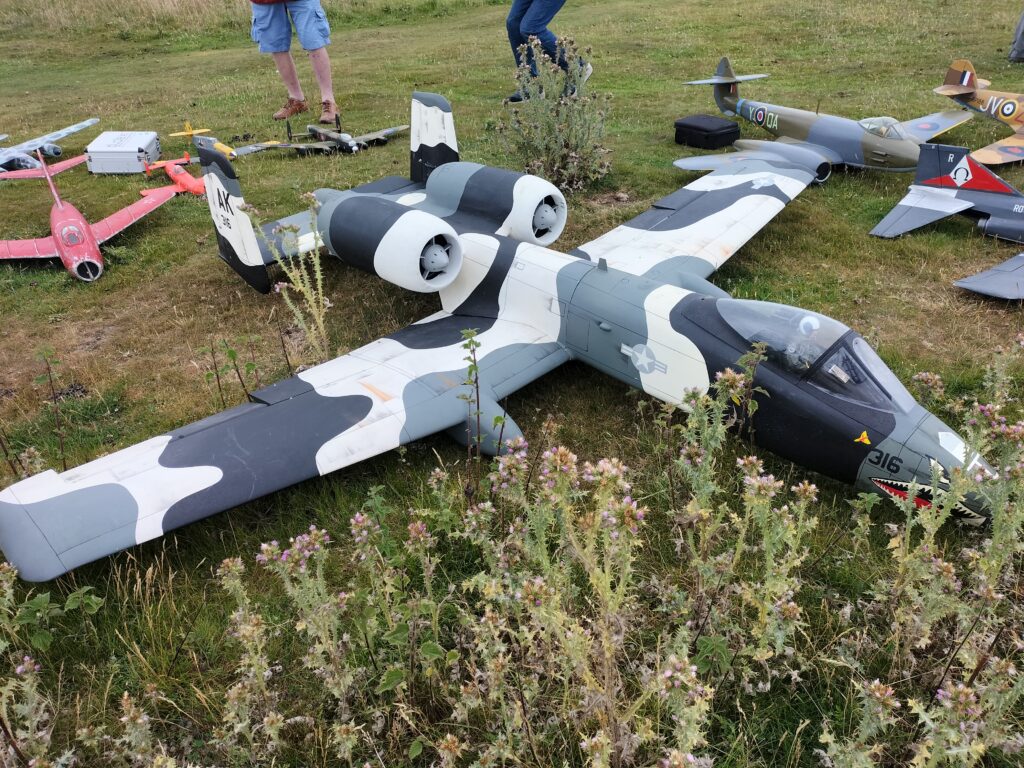
The Big Uns
Most of the big stuff went up. Sadly Andy Meade’s A10 did not get into the air, as the video shows. One of the hazards of the compression on the top. Bob Jenning’s superb Nimrod soared away effortlessly and motored round the sky most confidently, the C of G finally being sorted and some of the internals having been moved forwards. It deservedly got a round of applause. Sadly it suffered from being blown back too far on landing, in a similar manner to many of us when the wind speed got stronger, and the rotor near the ground became more acute. This was caused by the wind not being quite on the slope and is one of the hazards of flying in strong wind.
Simon Cocker’s big Canberra also suffered a take off upset. These big models are difficult to launch but in strong wind conditions, more of a challenge.
Not another Mid Air!
I will quickly mention the 2nd mid air of the weekend when my Hurricane hit Harry Twist’s Tucano causing severe damage to my wing, and writing off Harry’s plane. I have apologised profusely, but it was honestly no one’s fault. I cannot see a way round the problem. We had a rule for the weekend with marshalling of no more than 6 models in the air, and there were only 3 of us airborne at the time. The organisation and safety could not have been better. We all stood in a pilot’s box, called out launching and landing, the marshal making sure that there were no walkers in the landing zone etc. It is one of the hazards of flying together.
Flying went on until late and we all went home with a little sun burn, some very enjoyable flying, and some convivial camaraderie. I think everyone was tired after a long weekend’s flying.
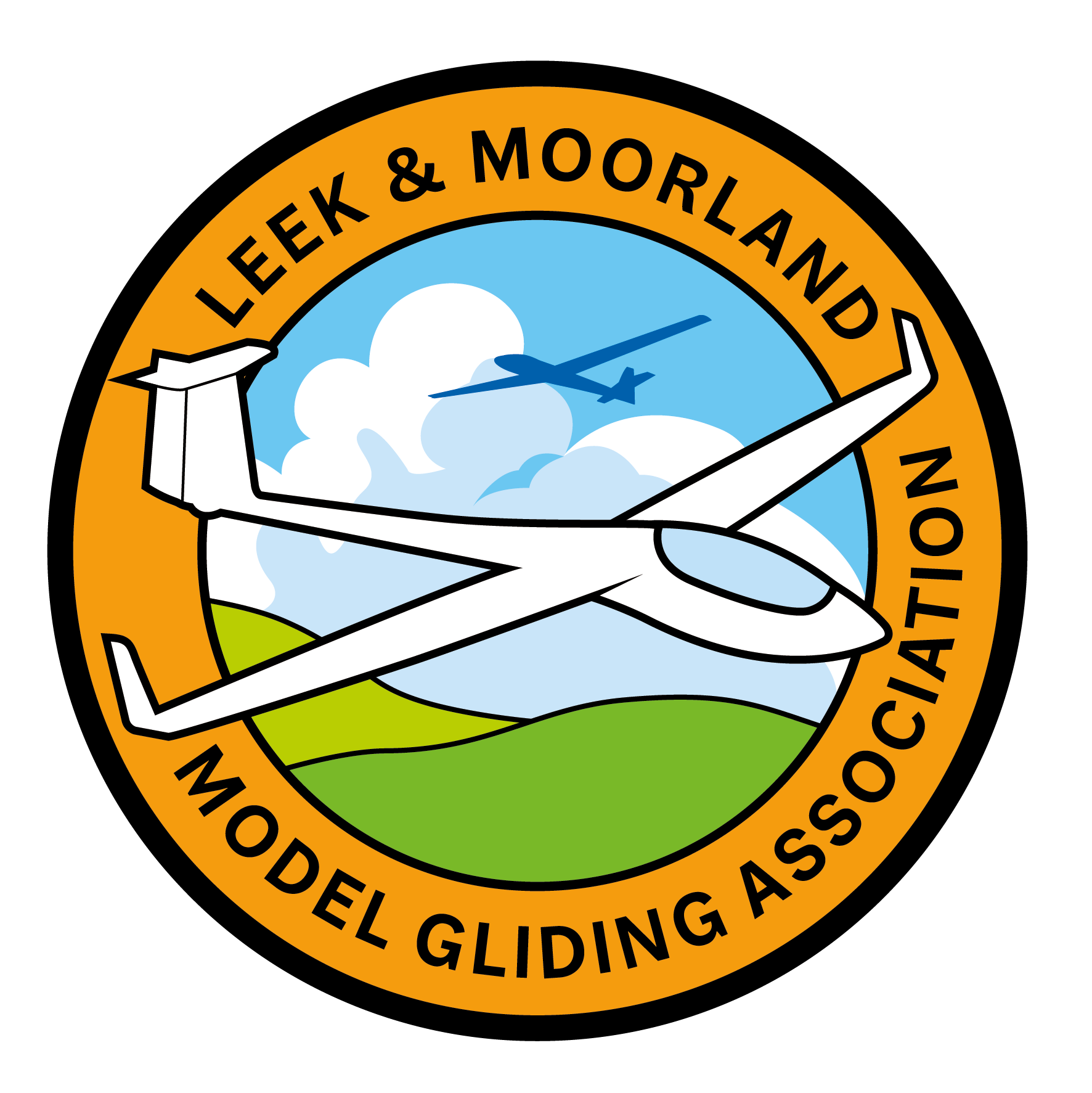
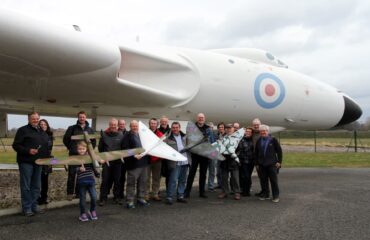
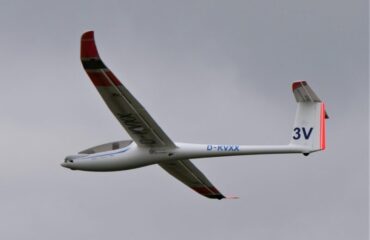

You must be logged in to post a comment.